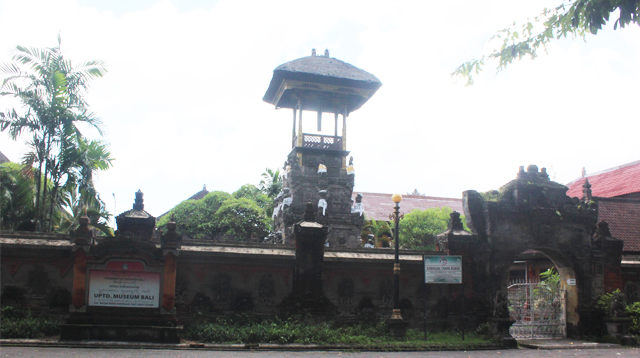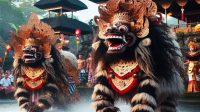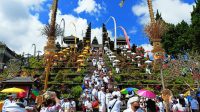BALI Museum is a state-owned museum situated in the heart of Denpasar City, precisely on Jalan Mayor Wisnu. To the north of the museum sits the Jagatnatha Temple, while in front there is the Puputan Badung Square and the Four-Faced Statue (Catur Mukha).
This museum stores and displays relics of the human past and ethnography. Collection of the museum in Denpasar includes various historical objects such as ethnographic equipment and supplies of life, art, religion, written language, and others that reflect the life and development of Balinese culture in the past.
The establishment of the Bali Museum was first coined by architect W.F.J. Kroon (1909-1913) who also served as Assistant Resident of South Bali in Denpasar. The idea was realized with the establishment of the Arca Building in 1910. The architects were I Gusti Gede Ketut Kandel from Banjar Abasan and I Gusti Ketut Rai from Banjar Belong with a German architect named Curt Grundler who was in Bali as a research tourist at that time.
Then, Kroon ordered joint planning with the Balinese traditional builders or the undagi. The kings of the four regencies in Bali as part of the kingdom in Indonesia namely the Buleleng, Tabanan, Badung and Karangasem provided financial support and project materials.
W.F. Sttuterheim, Head of the Antiquities Office at the time, continued the efforts to complete the museum’s collection with ethnographic heritage in 1930. To expedite the management of the museum, a foundation was then formed and chaired by H.R. Ha’ak, with Secretary G.J. Grader, treasurer G.M. Hendrikss and the members including R. Goris, I Gusti Ngurah Alit (King of Badung), I Gusti Bagus Negara as well as W. Spies.
The Bali Museum was inaugurated on December 8, 1932 and managed by the Bali Museum Foundation. There were differences in views between the undagi and the traditional views and religious aspects based on the Asta Kosala Kosali (geomancy) concept of the layout, method and layout of the buildings in Bali, while Curt Grundler emphasized the function and strength of the museum building. The combination of designs was then produced an architectural forms between the Pura (Hindu temple) and Puri (royal palace).
The foundation’s personnel were ratified on December 8, 1932 and the Bali Museum was opened to the public. Tabanan Building, Karangasem Building and Buleleng Building were opened for permanent exhibition with a collection of prehistoric, historical and ethnographic objects including visual arts.
The museum building was established on a land of 2,600 square meters with three courtyards, namely the outermost courtyard (jaba), the middle courtyard (jaba tengah) and the innermost courtyard (jeroan) bounded by walls and gates. The gate is called Candi Bentar (split gateway) and Candi Kurung (arch-roofed gateway) functioned as the entrance. There is also a Kulkul tower located south of Jaba Tengah. In the Northwest corner stands the gazebo used as a family resting place in royal times if wishing to observe the atmosphere outside the palace.
Exterior walls, courtyards, and gateway are designed in a typical castle or royal style of Denpasar. There are four pavilions in the museum complex representing various districts in Bali.
The Tabanan Pavilion in the north displays a collection of dance equipment such as dance costumes, all types of masks for mask dances, shadow puppets, kris dagger for Calonarang performance as well as some ancient statues. Meanwhile, the Pavilion in the middle has a typical style of temples in northern Bali. This pavilion has a collection of Balinese clothes Buleleng including traditional Balinese fans.
Ultimately, the Badung Pavilion is located at the main entrance close to the kulkul tower (a traditional tower to call out residents) as well as various other prehistoric collections. In this pavilion, visitors can see equipment used by humans during the hunting and gardening period, the farming period, and the metallic period. In the meantime, the top floor of the pavilion in this oldest museum in Bali displays a collection of Balinese arts.










